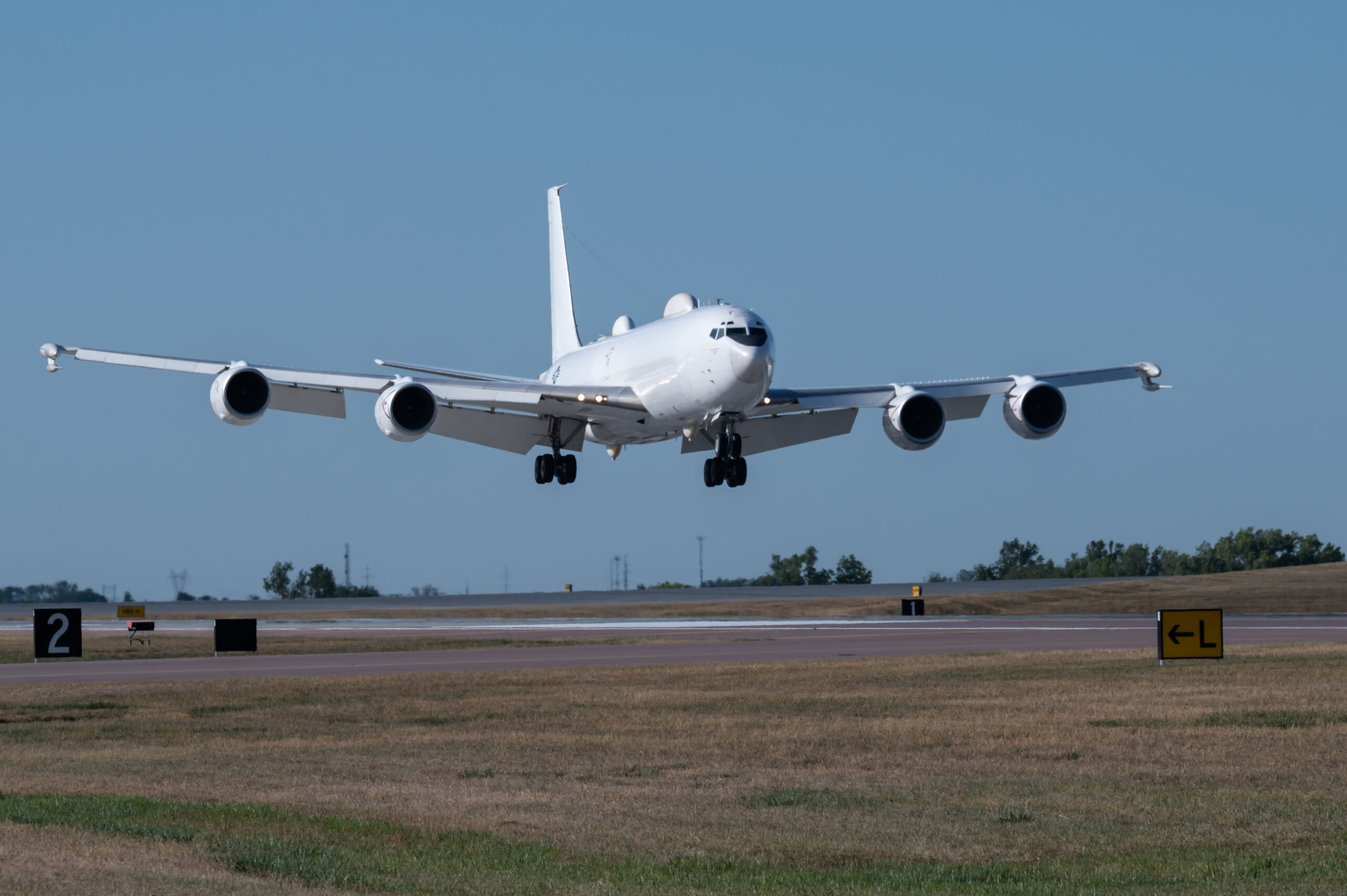
A specialized United States Navy aircraft designed to serve as an airborne command post during a nuclear conflict was spotted flying over the North Atlantic Ocean.
Newsweek has contacted the U.S. Navy for comment via email.
Why It Matters
The E-6B aircraft, also known as Mercury, is designed to serve as a communications relay for the nation’s nuclear-armed ballistic missile submarines and to facilitate the launch of land-based intercontinental ballistic missiles, according to the Naval Air Systems Command.
In April, an E-6B aircraft simulated the launch of intercontinental ballistic missiles at Offutt Air Force Base in Nebraska, testing its Airborne Launch Control System—which can launch nuclear-capable missiles if ground-based command centers are compromised.
Tech. Sgt. Chris Thornbury/U.S. Air Force
The Atlantic Ocean is a major operating area for the U.S. military. Last month, a pair of U.S. nuclear-powered aircraft carriers—USS Gerald R. Ford and USS George H.W. Bush—sailed in formation while conducting resupply operations and ammunition transfers at sea.
What To Know
Citing flight tracking data, TheIntelFrog—an open-source intelligence analyst on X, formerly Twitter—reported spotting an E-6B aircraft conducting flight operations over waters near Portugal‘s Azores islands on Sunday.
The Azores are in the North Atlantic Ocean, about 870 miles west of mainland Portugal.
IslandAviation Terceira Azores, a YouTube channel that records takeoffs and landings at Lajes Airport—which is on Terceira Island in the Azores and shares a runway with an air base—uploaded a video on Sunday showing the landing of an E-6B aircraft.
The U.S. Air Force describes Lajes Field as the “Crossroads of the Atlantic,” serving as a vital mid-Atlantic link for forces traveling to and from Europe, Africa and the Middle East.
Details of the E-6B aircraft’s temporarily deployment from its main operating base at Tinker Air Force Base in Oklahoma remain unclear. In June 2024, trackers showed the Mercury fleet conducting deployments in Norway and the United Kingdom.
The aircraft—derived from the Boeing 707 passenger jet—provides the National Command Authority, including the president and the secretary of defense, with what the Navy describes as “survivable, reliable, and endurable” nuclear command, control and communications.
What People Are Saying
Hans Kristensen, the director of the Nuclear Information Project at the Federation of American Scientists, wrote on X in June 2024: “The [E-6B] aircraft is designed to provide secure communication link between the U.S. National Command Authority and nuclear ballistic missile submarines. E-6Bs occasionally visit Europe but not often.”
The War Zone, a specialist outlet, wrote on June 5: “Today, the Mercury fleet supports two critical nuclear deterrence mission sets: a Navy one called ‘Take Charge And Move Out’ (TACAMO) and an Air Force one referred to simply as the Airborne Command Post (ABNCP), but better known by the nickname Looking Glass.”
TACAMO involves the relaying of orders to the Navy’s ballistic missile submarines, while the Looking Glass mission relays orders to the Air Force’s nuclear-capable bombers and silo-based intercontinental ballistic missiles.
What Happens Next
The aging E-6B fleet—which includes 16 aircraft in service—is scheduled to be replaced by the newer E-130J aircraft, maintaining a survivable communication link between the National Command Authority and the U.S.’s air-, land- and sea-based nuclear forces.
